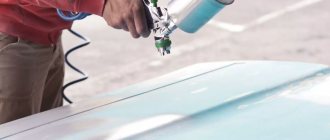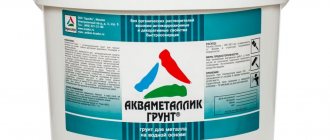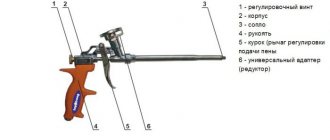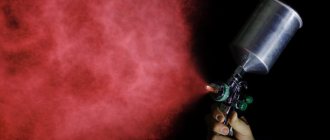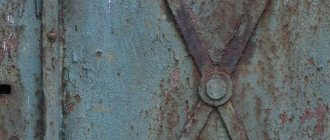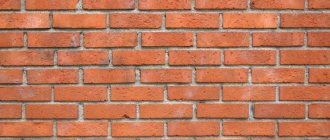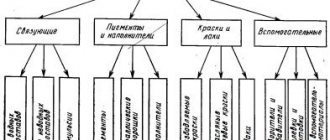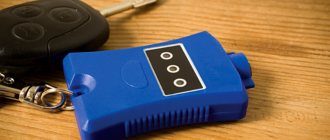Technology
The electrostatic sprayer was first used in 1941 by the American inventor G. Ransburg. The technique involved the use of electric fields along which charged paint particles move. The liquid paint material interacts with the electrode located in the gun, as a result of which a high-voltage negative charge (60-100 kW) is transferred to the paint. Charged particles, coming out of the spray gun nozzle, are directed along the lines of the electrostatic field to the grounded product on which the paintwork is applied.
The paint torch occurs due to the mutual repulsion of charged particles of the paint and varnish material. An important difference between this technology and other methods is that there is no need for paint mist, since the particles are directed along specified lines. Paint transfer rates can range from 70 to 98 percent. The transfer rate depends on the conductivity of the material being painted, the shape of the product and other indirect factors.
The electrostatic method allows you to reduce paint consumption, and makes the painting process easier. When painting metal pipes in the traditional way, you need to turn the product over several times.
In the case of an electrostatic gun, there is no need to rotate the part, since the charged particles are directed along the lines of force and easily bend around obstacles. Painting is carried out very evenly, since on an already treated area the paint repels excess incoming material.
Electrostatic painting
Electrostatic painting is the application of paint to a surface using interaction forces between stationary point electric charges (Coulomb force).
For those curious, what is Coulomb's law:
Coulomb's law is a physical law that describes the force of interaction between stationary point electric charges depending on the distance between them.
Spray Types
Two types of electrostatic spraying are used - classic and cascade. The classics assume that a high-voltage direct current is supplied to the electrostatic spray gun through a high-voltage cable. The classical scheme has a number of significant disadvantages. First of all, we are talking about voltage instability in the pistol electrode. In addition, painting is quite inconvenient, since the large cable makes it difficult to operate, and to turn off the power supply you need to get to the transformer every time.
In the cascade technique, high voltage is not generated externally, but in the gun itself. A voltage of only 12 V is sent to the gun via a low-voltage cable, and high voltage is generated inside the device. The transformation is carried out at the spray gun cascade. The cable used is thin and flexible, making it very convenient to work with.
The cascade method allows you to turn off the supply of electricity regardless of the generator, as well as control the voltage level, choosing the appropriate one for a particular type of material. The voltage itself is highly stable, which makes it possible to significantly reduce paint consumption. The main disadvantage of cascade spraying is the high cost of the equipment. However, the costs are quickly recouped due to the cost-effectiveness of this technology.
Electrostatic spraying has some limitations dictated by the following circumstances:
- Properties of paint and varnish material. In order for the paint to charge correctly on the electrode, a resistance of at least 30 kOhm is required. Otherwise, the efficiency of painting in an electrostatic field is radically reduced. As an example of a paint and varnish material with a low level of resistance, we can cite compositions with significant additions of metal powder (these include metallic enamels). Until recently, electrostatic painting was not used when applying water-soluble paints, since there was a high risk of short circuits due to the electrical conductivity of the liquid. The latest models of equipment for electrostatic painting allow you to work with water-soluble coatings.
- Properties of the material. Non-conductive items such as plastic and wood are difficult to paint. The process can be facilitated by using special conductive primers (in the case of plastic) or moisture (for wood).
- The shape of the part to be painted. As mentioned above, the electrostatic method allows you to paint products of various shapes, however, in a closed conductive circuit, the voltage of the electrostatic field is zero. Therefore, in deep recesses there is no electric field, which is why particles of paint and varnish material do not fall into such areas. Moreover, without getting into all kinds of depressions, the paint concentrates on other areas (for example, on the edges), which leads to the formation of a too thick layer of coating. To avoid such problems (they are called a Faraday loop), painting hard-to-reach areas is carried out with a conventional spray gun - airless or pneumatic.
Watch a video of electrostatic painting of wooden furniture
The product to be painted is placed on a metal table to which a grounding cable is connected. In order for charges falling on the object to be painted to flow through grounding, the wood or the applied paintwork material must have a certain electrical conductivity. For wood to be conductive, its moisture content must be at least 14%.
There are special additives that reduce the resistance of paintwork materials if necessary. Special paint resistivity meters are produced.
Due to the fact that equally charged particles repel each other, internal repulsion occurs in the droplets, resulting in their further separation. This grinding is independent of system pressure, so the material can be well atomized even at low pressure. However, this imposes restrictions on the use of the method for applying materials with high viscosity.
Charged paint particles fly, guided by electrical forces, to the grounded product, including to its back side. This allows you to surround the product with a flow of material and paint even the back part, thereby further reducing paint loss.
In the case of chairs, for example, up to 30% of the material applied to the front gets onto the back part. In this way, a directed transfer of paintwork material from the gun to the surface of the part occurs, significantly reducing material loss in the case of lattice products, and thereby increasing productivity.
Example of an electrostatic spray system
For example, a typical electrostatic spray system includes a paint feed pump, a two-hose spray gun, and a power supply.
The power supply converts alternating current 220 V into direct current low voltage (12 V), while it provides regulation of the output voltage and a protection system that blocks high voltage when the spray gun approaches grounded surfaces.
| Rice. 2. Electrostatic paint application system from Kremlin |
Spray gun "Star 3001"
As an example, let's look at the Star 3001 paint sprayer. This device uses a cascade method for generating high voltage. Both mechanical and automatic equipment modifications are manufactured. Both models can work with both airless spray and air mixture.
There are also separate modifications for water-soluble paints and solvent-based paints. Each model, depending on its purpose, can differ significantly in the materials used in it, and also have its own design features.
Thus, the range of equipment is wide, so before purchasing you need to decide how the electrostatic gun will be used. The Star 3001 device is designed to work with water-based coatings. This means that the device is protected from short circuits, since the design is made of special material. But “Star 3001” is not suitable for working with organic solvents, so you need to look for a modification whose body is inert towards solvents.
The problem with the Faraday circuit in the sprayer of this model is solved by turning off the power supply. In the absence of power, the paintwork is sprayed only under pressure. The voltage control key is located directly on the body of the spray gun, which is very convenient. In addition, you can control the pressure with your own hands - just pull the trigger. The gun is also equipped with memory, which supports up to three electrostatic field options for each type of paint.
An important parameter of any paint and varnish material used is electrical resistance. Together with the Star 3001 device, a probe is supplied that tests paintwork materials for resistance, thereby providing the best indicator for the electrostatic field.
Despite the technical equipment, this paint sprayer is easy to maintain. The case is easily disassembled, after which all mechanisms are accessible to visual observation. In the event of a breakdown, any parts of the gun must be replaced. This circumstance makes it possible to simplify repair work and also reduce its cost.
It should be noted the light weight of the device - only 900 grams. Thanks to its lightness, working with the device is not physically difficult, and due to the ergonomic handle it is also convenient.
A modification “LARIUS 2 Paint Systems” has been developed for industrial use. This system uses a double diaphragm, due to which the paint is injected under low pressure.
Application of technology in Russia
Electrostatic painting technology has many advantages. However, in Russian conditions, the use of electrostatic spraying has not yet found widespread use. The main reason is the lack of a sufficient number of qualified specialists. The equipment itself is complex; you need to know how to use it, otherwise, instead of electrostatic spraying, the paint will be sprayed in the usual way, which will not give the intended effect.
Another difficulty is finding paintwork materials with the required level of electrical conductivity. If the indicator differs from the specified one, it can be changed, but in any case, you cannot do without the original information. At the same time, it is often impossible to find out the level of electrical conductivity either from sellers or manufacturers. As a result, the only way out is to purchase Western-made paints and varnishes, which are significantly more expensive than domestic samples.
The next important factor is ensuring high-quality grounding. In most cases, this condition is not properly met. In the absence of grounding, the painter will paint not only the surface, but also himself.
It should also be said about one popular misconception: many painters believe that the larger the torch, the faster the surface will be painted. However, in practice this is not the case, and increasing the torch only turns the electrostatic apparatus into a regular spray gun.
Electrostatic painting certainly has great application prospects. The necessary equipment is commercially available and the technology is well established. However, to become more widespread, electrostatic paint application requires special training and then testing the knowledge in practice.
Advantages of modern electrostatic painting systems
Modern systems for spray painting in an electrostatic field and modern specialized paintwork materials allow you to enjoy the above-described advantages and reduce the impact of the method’s disadvantages on the result.
Thus, to impart initial conductivity to wood with low humidity, it is recommended to apply a water-based stain by dipping as the first layer. 1.5-3 hours after this operation, both the front and back surfaces of the chairs are well painted in an electrostatic field.
